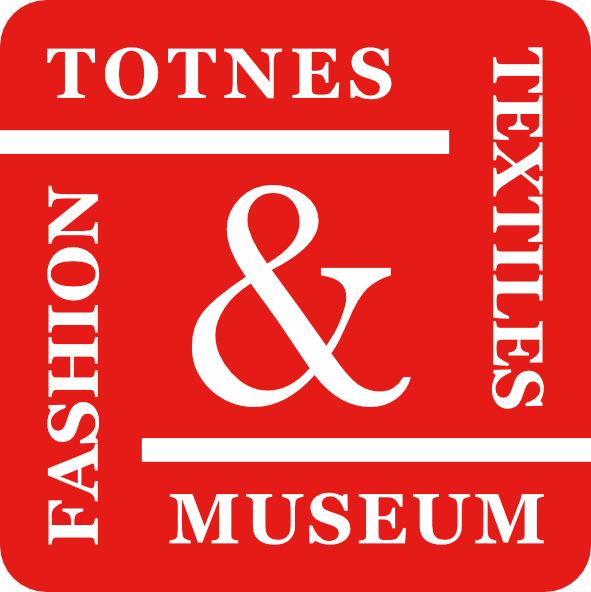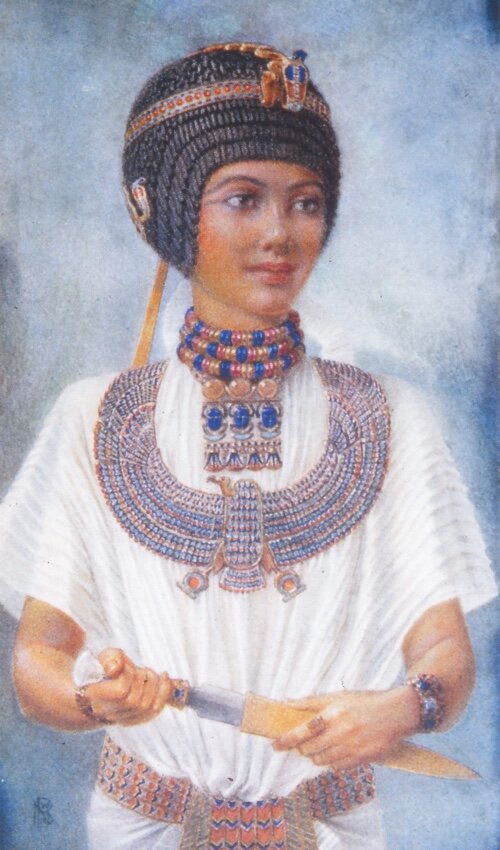Ancient Egyptian Jewellery
A talk given to the Friends of the Collection on 19 January 2020 by Pam Scott
Egyptian costumes were for the most part very plain and usually white, and it was the jewellery which added colour and interest. Ancient Egyptian jewellery is easily recognisable from the motifs used, the colours, the design and the materials. A rearing cobra or uraeus, for example, is frequently found on royal headpieces. These items, up to five thousand years old or more, are an expression of ancient Egyptian culture and beliefs.
Winifred Brunton’s painting of Tutankhamun wearing jewellery found in his tomb
We get much of our picture of jewellery from ancient Egyptian art, both carved and painted, but our major source of information is the jewellery itself, of which a surprising amount has survived. The ancient Egyptians buried their dead with items from life to be of use to them in the next life, so most extant pieces of jewellery come from burials.
However, few Egyptian burials have been found undisturbed, robberies frequently taking place soon after the interment, so much has been lost. To the general public, the tomb of Tutankhamun is the best-known example of a royal burial. Although more than two hundred pieces of jewellery were recovered from the tomb, it was robbed twice in antiquity, and it has been estimated that over sixty percent of those pieces not hidden within the mummy wrappings were stolen.
It was not only pharaohs who were buried in elaborate tombs; other members of the royal family, nobles and even lesser individuals might also be furnished with a tomb.
One of the most beautiful pieces of jewellery shown in the talk was the pectoral or chest ornament, and necklace from the burial of Princess Sithathoriunet, discovered by Sir William Flinders Petrie and Guy Brunton in 1914. Brunton’s artist wife Winifred (née Newberry) produced a number of paintings based on the archaeology, which show the jewellery as it would have been worn. She was also a trained archaeologist, as was Petrie’s wife Hilda. The pendant and necklace contain carnelian, lapis lazuli, turquoise, garnet and feldspar, the ancient Egyptians valuing semi-precious stones for their colour, which had symbolic significance, rather than for any refractive qualities. These were frequently copied in cheaper materials such as glass and glazed composition (Egyptian faience).
Pectoral of Princess Sithathoriunet
Of course jewellery was also an indicator of wealth and power, and gold, mainly from Nubia, and identified with the flesh of the gods, was an important feature of much ancient Egyptian jewellery. Silver was rarer and probably more valuable because it had to be brought from Asia Minor, present day Turkey.


